From Habitat magazine - issue 06
“Don’t paint your walls green – it makes you want to relax and chill out.”

These were the words of my sister-in-law, who’s just completed her thesis on colour psychology, when I told her I was planning to redecorate my home office. And that explained a few things, I thought, gazing at my green desk, green drawers, green magazine holders and green views into the bush.
Maybe it was a good idea to opt for blue. After all, Theresa explained to me that this was the colour of intellect and mental focus. Would I use a strong royal, a pale baby or a greenish blue to create the desired effect, though? As I started doing my homework on the psychology of colour, I discovered that not all hues are created equal…
Science has long recognised that colour affects our behaviour and the way we feel. After all, it’s the first thing we register and that we use to help assess the things around us, such as whether certain foods – ie blue ones – might be poisonous, for example.
To understand these responses, we need to look at how colour works. Essentially, when the light reflected from coloured objects strikes the retinas in our eyes, the wavelengths are converted into electrical impulses. These pass into the part of the brain that rules our hormones and endocrine system, which are instrumental in regulating our moods. Unconsciously, then, our eyes and bodies constantly adapt to these stimuli, influencing our impulses and perceptions.
While the scientific study of colour is as old as time, the study of colour’s effects on our psyche is only about a century young. Even until only about two decades ago, the common perception was that, because our response to colour is subjective, it must also be unpredictable. Why, for example, did people respond differently to the same shade?
It was leading UK colour psychologist Angela Wright who, by studying colour harmonies and the often unconscious thought processes related to them, developed a means of predicting our responses to colour with remarkable accuracy. It’s called the Colour Affects System and works on two levels: The psychological properties of each of the 11 basic colours; and the roles that variations in tones, hues and tints can play in achieving a desired psychological effect.
A key factor in this, Angela recognised, is that it is not one colour that triggers our responses, but a combination of the millions of colours, hues, tones and tints the human eye can distinguish. For example, a grey sky over a summer cornfield will evoke quite a different emotion than will a grey winter’s sky downtown. Therefore, there are no wrong colours per se, but different colour schemes do prompt different responses.
To apply colour psychology successfully, Angela also recognised the need to match the individual’s personality with the appropriate tonal colour family. There are four of these, each reflecting nature’s patterns, and every shade can be categorised into one of them.
Once we have made this connection, she says, we can create colour combinations that will help turn our homes into spaces that reflect and support the personalities of those living there. Even if very different characters live together in one house, the right colour palette can ease tensions and help create harmony.

Personality type: These people are spirited, energetic, motivated, charming and eternally young. They are never dark or heavy, and usually work in people professions, such as the media, entertainment or care giving. They have a natural affinity for the young and love the outdoors, and are clever, but not interested in heavy academic debate. On the downside, they can be single-minded, do too many things at once and be superficial.
Matching colours: Warm, clear colours, sometimes bright. They need stimulus as well as ease, so their ideal palette will include soft cream, peach or turquoise, as well as brighter scarlets, cobalt or sky blues, and emerald greens and pure yellows. Supporting neutral colours include light camel, French navy and light, warm greys.

Personality type: Cool, calm, collected, gentle and internally motivated. Their humour is subtle and they loathe vulgarity. They enjoy creating order out of chaos and keeping peace, have a great sense of touch and often have an analytical nature. They make good diplomats, artists, musicians and GPs. On the flip side, they can seem aloof and unfriendly.
Matching colours: Cool and subtle; sometimes dark, but never heavy, such as maroon, raspberry, rose pink, grapefruit and sage green. Good neutrals to support them include taupe, dove grey and cool navy.
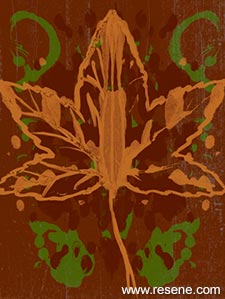
Personality type: Like summer people, they are externally motivated, but are fiery, intense, strong and possibly flamboyant. They have a rigorous sense of justice and environmental awareness. Careers include ones that dig beneath the surface, such as police officers, psychiatrists and investigative journalists. Physical comfort is a must – which is why they can’t stand flimsy furniture.
Matching colours: The preferred colour palette is off-beat and devoid of pure primary colours. Examples include tomato, burnt orange, olive green, terracotta and aubergine. Supportive neutrals are most shades of brown.

Personality type: Most winter personalities are internally motivated, objective, super-efficient, confident and abhor clutter. They often pursue careers in government, finance, film or theatre, or the medical professions. On the negative side, they can appear elitist, cold and uncaring.
Matching colours: In winter, natural colours are far and few between, hence the winter personality will often wear black all winter and white all summer. The thing is, they can actually pull it off. Colours that work well with black are dramatic hues like jade green, royal purple and lemon yellow. Supportive neutrals are black, white and clerical grey. To find out what season you are, try out the Resene Colour Personality game.

Positive: Red represents physical courage, strength, warmth, energy and excitement. It raises our blood pressure, stimulates appetite and tends to make us lose track of time. Pure red is powerful, and so is best used as an accent, such as one piece of red furniture or one red signature wall. Elevating your heart rate by painting your bedroom red probably isn’t such a grand idea, but more subdued hues, such as burnt orange and terracotta, can be comforting and cosy in a bedroom or living area.
Negative: When misused or overused, red can trigger aggression.

Positive: Blue is the colour of intelligence. Strong hues denote clear thought; lighter ones, mental focus. It improves productivity, and so might be a good choice for a study. Certain shades of blue relax, soothe and make us feel calm, which is why they are often a preferred bedroom colour. Blue is also considered to be clean, and so works well in bathrooms and laundry areas.
Negative: Blue can exude coldness and aloofness. In kitchens, it seems to be less desirable, possibly because of our primitive instinct to avoid blue foods – in fact, it can act as an appetite suppressant.
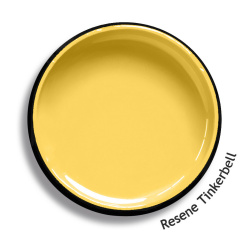
Positive: Yellow is the colour of optimism, confidence, extraversion, emotional strength, friendliness and creativity. It tends to make people feel happy and energetic. Buttery shades of yellow are easier to live with.
Negative: Too much yellow or the wrong tone can prompt irrational behaviour. It can also induce fear, depression and anxiety.
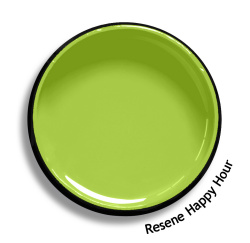
Positive: Green is at the centre of the spectrum and so represents harmony, balance and peace. It soothes and relaxes, and is therefore also a healing and reassuring colour. Olive and sage greens have a neutral, timeless character and are therefore a popular office colour.
Negative: Green can elicit boredom, stagnation and blandness.

Positive: Purple is the colour of royalty. It is opulent and often associated with mystery and spiritual awareness, vision, luxury, authenticity, truth and quality. Saturated, dark purple can add powerful punch to a room, while as a lavender tint, it’s popular with little girls.
Negative: Excessive use can create an introverted aura, and pitching it wrongly can scream decadence, suppression and inferiority, or appear cheap and nasty.
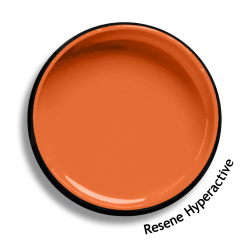
Positive: Oranges are warm, passionate, sensual and fun. The brighter shades are cheerful and tend to stimulate the appetite, making them ideal for kitchens and dining rooms, where they also create a comfortable, cosy atmosphere.
Negative: Feelings of deprivation – most likely when orange is combined with black – frustration, immaturity and lack of intellectual values.
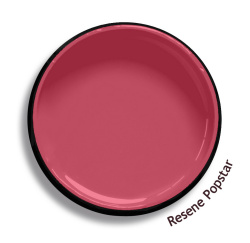
Positive: Pink soothes, rather than stimulates. In fact, research shows it can reduce anger – hence its use in prisons. A nurturing colour with a childlike appeal, it is a good choice for a young girls’ room, especially when combined with lavender.
Negative: Can smack of inhibition, emotional claustrophobia and physical weakness.

Positive: Grey can enhance creativity, so it’s a good office colour. As a neutral, it provides an unobtrusive and stylish background for all sorts of colour combinations and furnishings in all kinds of looks.
Negative: Used excessively, grey can exude a lack of confidence and fear. Pure grey can be suppressive and depressing.
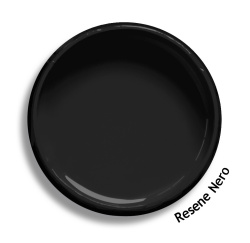
Positive: Black can be timeless and glamorous. It is also the colour of emotional safety, efficiency, substance and excellence. Psychologically, black creates protective barriers, as it totally absorbs all the other colours of the spectrum. Combine it with white and bright colours for a modern look, or use black furniture in a neutral-coloured room for elegance.
Negative: Black represents oppression, coldness, seriousness and weight. It makes rooms seem smaller too.

Positive: Visually, white heightens our perception of space, so it’s ideal for small rooms. Representing hygiene and cleanliness, it’s also a popular choice for kitchens and bathrooms. Other traits include purity, simplicity, sophistication and efficiency.
Negative: Can indicate sterility, coldness, barriers, unfriendliness and elitism, and can make warm colours look garish.
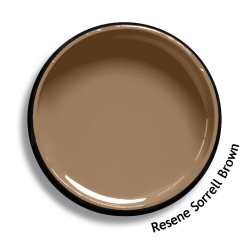
Positive: Brown is associated with seriousness, warmth, nature, reliability and support. It is a soothing, comfortable colour and wears well, so it’s ideal for a family room. Combined with shades like pale blue or fuchsia, browns can also be exciting and ooze sophistication. They work well with spicy or warm colours, too, and you’ll find a shade that’ll work well in most rooms.
Negative: Picking it wrong gives an impression of lack of humour and sophistication, and heaviness.
words: Anya Kussler
pictures: Dean Proudfoot
Search habitat magazine stories
Printed copies of habitat highlights are available from late March 2024 at Resene ColorShops and resellers, while stocks last. You can view back issues of habitat magazine online.
Specifiers:
If you have an idea, project or story that you think would suit habitat, we’d love to hear from you. Please drop us an email with your details and include photos if submitting a project.
Sign up for a DIY card and Save! Australia | New Zealand